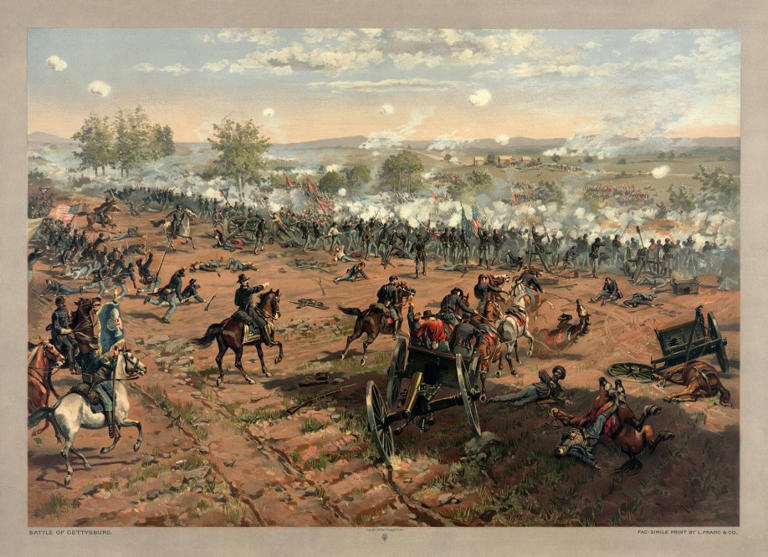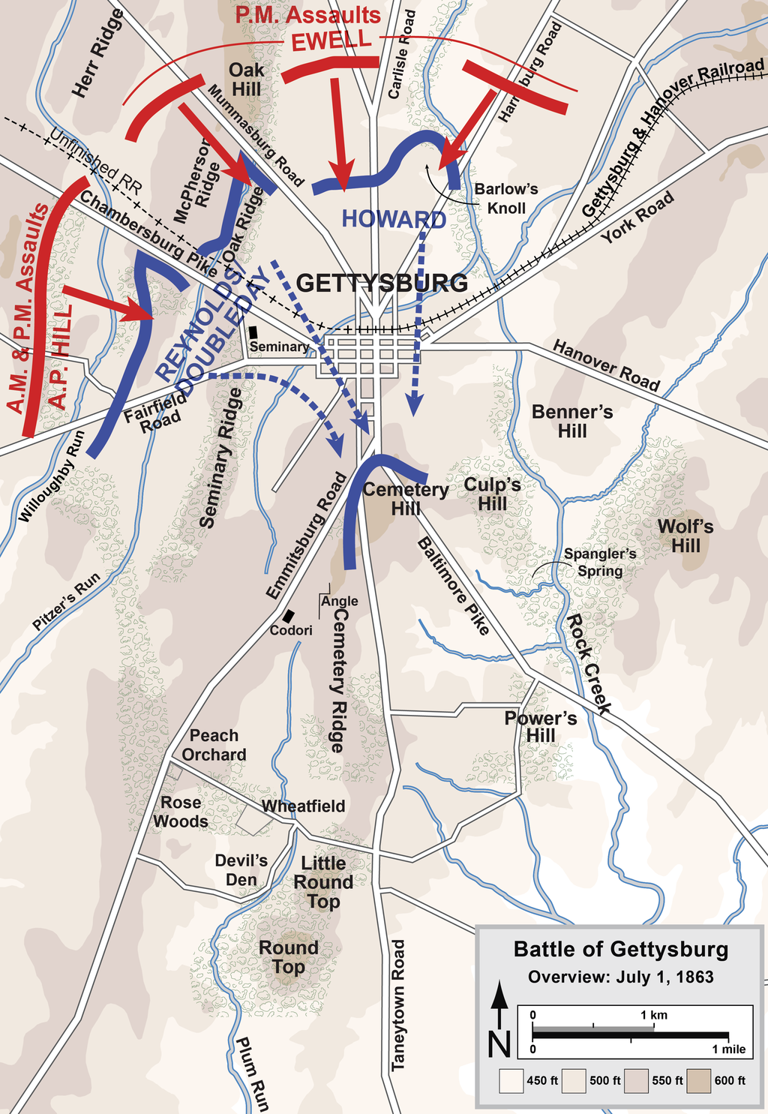Story by Randi Mann •
This Day In Weather History is a daily podcast by Chris Mei from The Weather Network, featuring stories about people, communities and events and how weather impacted them.
--
Between July 1 and 3, 1863, Union and Confederate forces fought in the Battle of Gettysburg. The Battle took place in Gettysburg, Pennsylvania, and is considered a turning point in the American Civil War. It's known to be one of the bloodiest battles on American soil.
Historians report that the Battle resulted in 46,286 causalities and missing soldiers. The Battle was so bloody because of bayonets, muskets, and cannons, but the weather also likely impacted the overall death toll.

How weather likely impacted the Battle of Gettysburg's extensive death toll© Provided by The Weather Network"L. Prang & Co. print of the painting "Hancock at Gettysburg" by Thure de Thulstrup." Courtesy of Wikipedia
Rev. Dr. Michael Jacobs, a math professor at the University of Pennsylvania (Pennsylvania College at the time), recorded his weather observations during the three-day Battle. Because of his notes, the "Meteorology of the Battle" was published. It outlines specific weather details from the Battle of Gettysburg and potential impacts.
On Wednesday, July 1, 1863, the Battle began. The sky was covered by cumulostratus clouds. It was 76 degrees (24.4 °C) and there was a light breeze.
The second day of the Battle started with similar weather conditions. By the afternoon, the sky was 30 per cent clear and the temperature rose to 81 degrees (27.2 °C).
The third day of the Battle started with significant cloud cover but a lot of it cleared by the afternoon. However, the cloud that didn't clear happened to be the "massive thunder-cloud of summer." At around 6 p.m. EDT, a thunderstorm developed. "The thunder seemed tame, after the artillery firing of the afternoon," wrote Rev. Dr. Jacobs.
The first two days of the Battle were hot and soldiers were dressed in heavy uniforms and weaponry. The soldiers were likely subjected to heatstroke and heat exhaustion.
And on the third day of the Battle, many of the wounded were still lying in the field. Those who were laying in areas near the Plum Run Creek drowned. The excessive rain from the storm overflowed the creek's banks and flooded the likely dry hard surface.

How weather likely impacted the Battle of Gettysburg's extensive death toll© Provided by The Weather Network"Overview map of the first day of the Battle of Gettysburg, July 1, 1863." Courtesy of Hal Jespersen/Wikipedia/CC BY 3.0
On July 4, the soldiers had to trek almost 30 km, pulling wagons filled with the wounded. The conditions were rough as the dirt roads started t dissolve. As they tried to head back to Virginia, they couldn't cross the Potomac River. Normally it would be shallow enough to walk across, but the rain caused the water levels to rise and the army was trapped on the north side while the Union forces were in pursuit.
To learn more about the meteorological impacts on the Battle of Gettysburg, listen to today's episode of "This Day In Weather History."
No comments:
Post a Comment